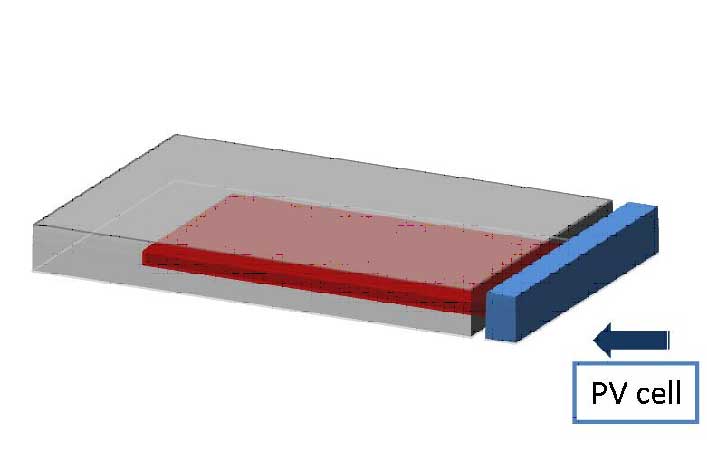Nanostructured Photovoltaics
 |
| Schematic of QD based LSC demonstrating the basic design aspect |
We are working on the design and development of solar cells and solar concentrators which will utilize nanoscale materials for converting solar energy into electrical power. The nanoparticles we use in our research are semiconducting quantum dots grown by chemical synthesis. These include dots of different materials and sizes, with optical and structural properties varying over a wide range. In particular, we are focusing on narrow band-gap semiconductor quantum dots with emission energies in the infra-red. These structures have high absorbance over a broad spectral range, which makes them very efficient collectors of the solar photon flux. In addition, they have large Strokes’ shift and long recombination lifetimes, both desirable properties in active materials for solar energy conversion. Using a variety of spectroscopic techniques and photovoltaic measurements we have begun characterizing these quantum dots for their applicability in solar energy production.
| A prototype dye-based LSC (Rhodamine B – PMMA composite) with thin Silicon cell attached at the edge. |
Our preliminary findings demonstrate optical efficiencies of nearly 13% in luminescent solar concentrators comprising the infra-red quantum dots, higher than that reported by other types of inorganic nanoparticles. We are continuing our efforts in increasing the efficiency of these devices which include tailoring the optical properties of the nanoparticles and optimizing the structural components and design of the devices.







